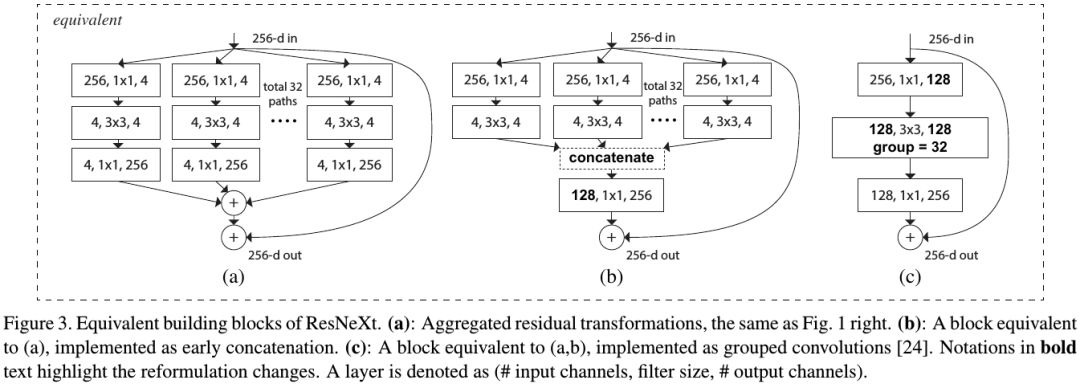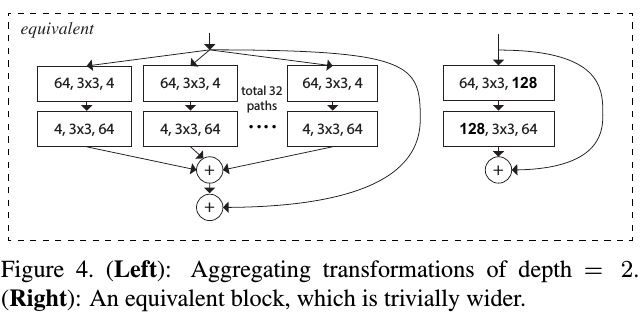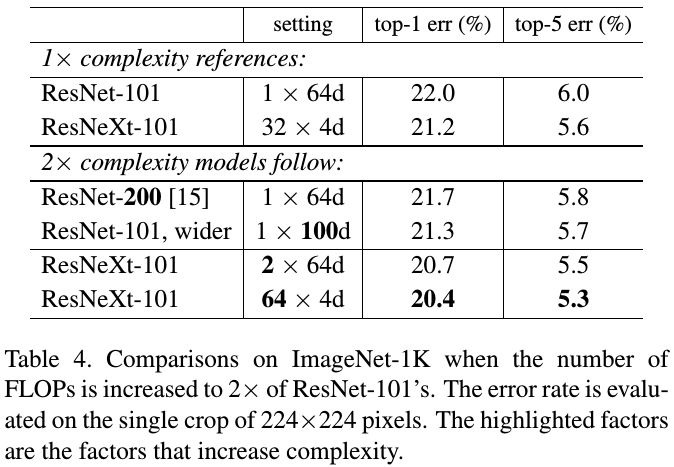Keyword [ResNeXt]
Xie S, Girshick R, Dollár P, et al. Aggregated residual transformations for deep neural networks[C]//Computer Vision and Pattern Recognition (CVPR), 2017 IEEE Conference on. IEEE, 2017: 5987-5995.
1. Overview
1.1. Motivation
- transition from feature engineering to network engineering
- human effort has been shifted to designing better network architecture for learning representation
- important strategy of Inception model is split-transform-merge
In this paper, it proposed ResNeXt Network
- aggregate a set of transformations with the same topology
- homogeneous multi-branch architecture
- increase cardinality (the size of the set of transformation) is more effective than going deeper or wider

1.2. Related Work
1.2.1. Multi-branch Convolutional Network
- Inception. multi-branch
- ResNet. two-branch
1.2.2. Group Convolution
- channel-wise convolution
1.2.3. Compressing Convolutional Network
- decomposition. at spatial or channel
1.2.4. Ensembling
2. Method
2.1. Simple Neurons


Inner Product. can be recast as a combination of splitting, transforming and aggregating.
- D. the number of channel
- x=[x_1, x_2, …, x_D]
2.2. Aggregated Transformations
- Network-in-Neuron. replace the elementary transformation (wx) with a more generic function

All T_i have the same topology.
- T. arbitrary function; projects x into low-dimension embedding and then transforms it
- C. the size of the set of transformations
2.3. Relation to Grouped Convolutions

2.4. Depth ≥ 3
- The block depth must ≥ 3.

2.5. Capacity

- Left. 25664 + 336464 + 64*256 ≈ 70k parameters and proportional FLOPs
- Right. C(256d + 33dd + d256) ≈ 70k, when C=32, d=4
3. Experiments
3.1. Cardinality vs Width


- with complexity preserved, increasing cardinality at the price of reducing width starts to show saturating accuracy

- more training data will enlarge the gap of validation error, shown in ImageNet-5K set
- the saturation is caused by the complexity of dataset, not the capacity of models
3.2. Cardinality vs Deeper/Wider


- incrase cardinality better
3.3. w/o Residual

3.4. Comparison

3.5. Detection
